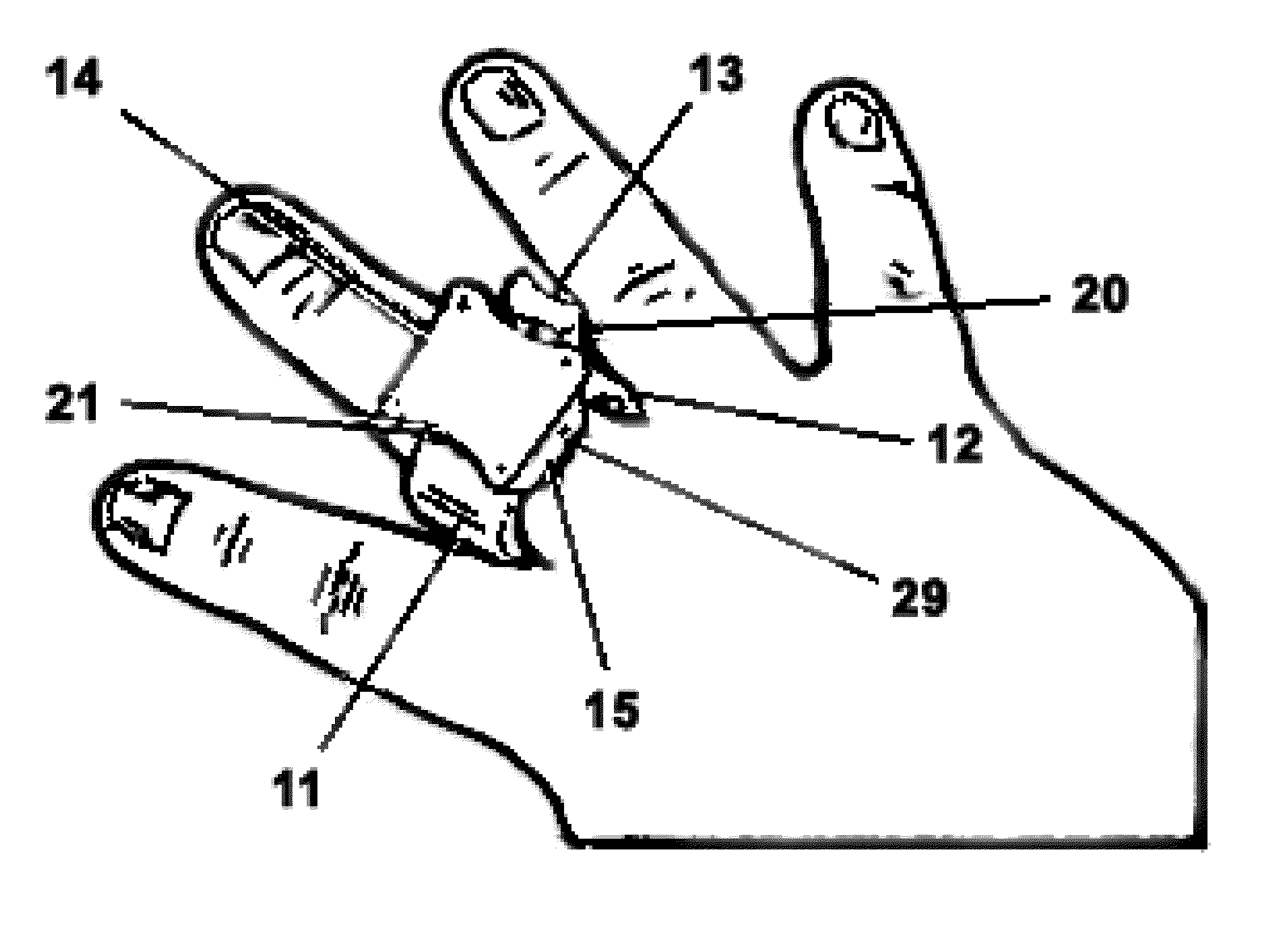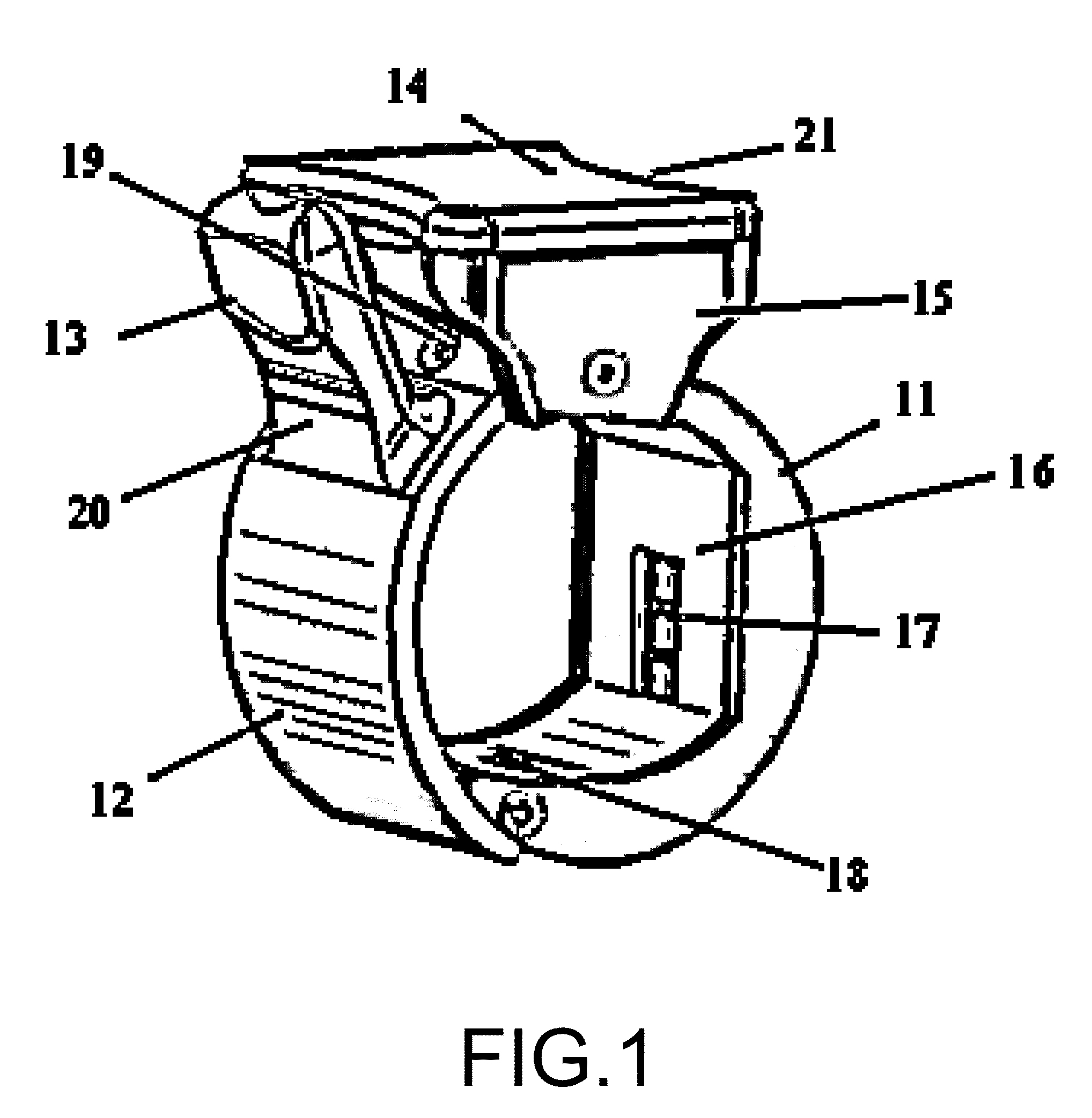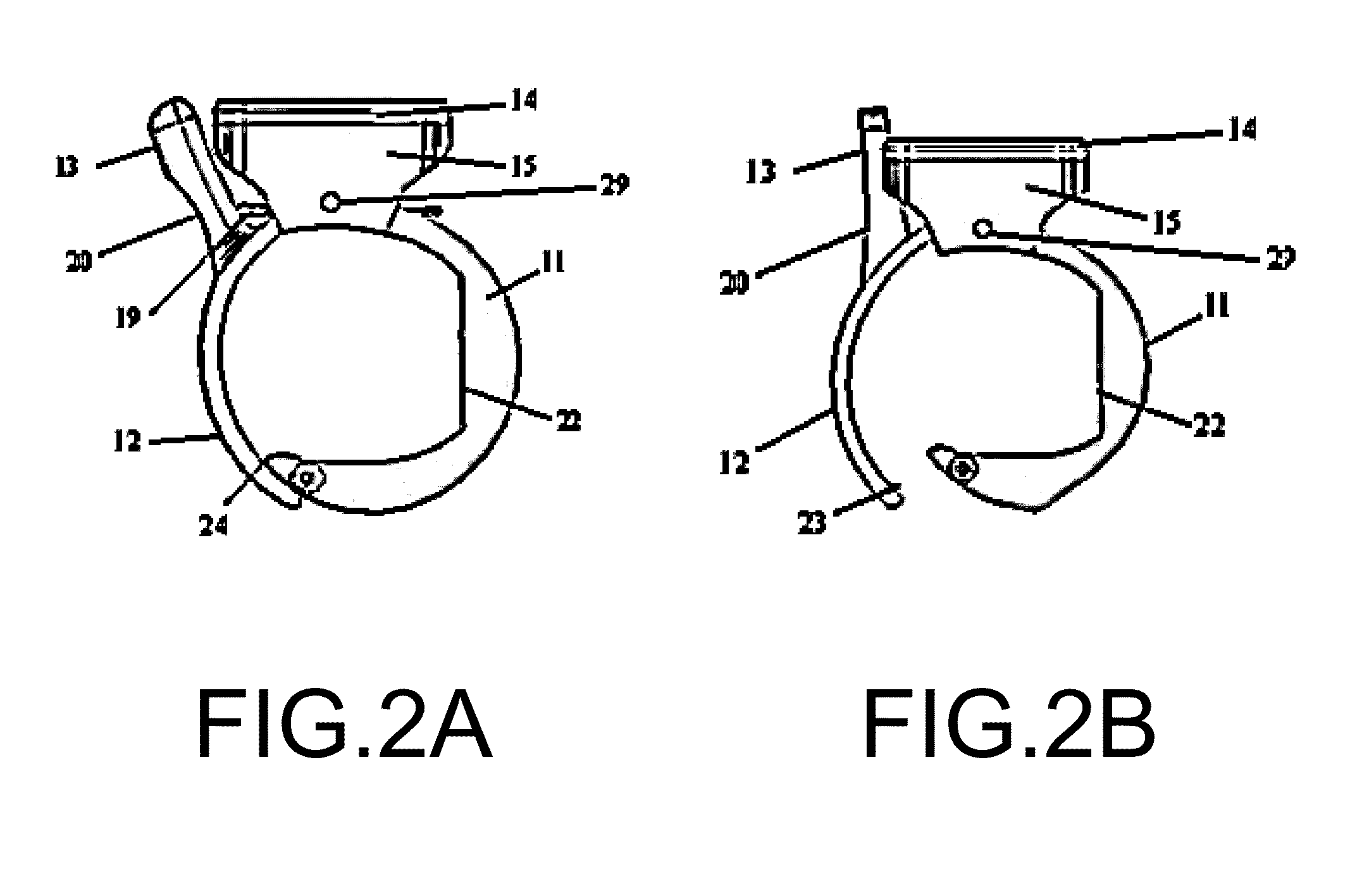Rapidly deployable sensor design for enhanced noninvasive vital sign monitoring
a sensor design and non-invasive technology, applied in the field of devices for monitoring the health status of patients, can solve the problems of difficult use of familiar oscillometric blood pressure cuffs, inability to accurately measure sbp, and inability to fasten bp cuffs well
- Summary
- Abstract
- Description
- Claims
- Application Information
AI Technical Summary
Problems solved by technology
Method used
Image
Examples
Embodiment Construction
[0025]FIG. 1 is an isometric view of the clip assembly 11 taken from a view that is angled slightly relative to the length of a patient's finger in accordance with the invention. The top of the clip 14 covers a hollow top sensor housing 15 which contains signal conditioning electronics and a user interface. The structural clip 12 half of the assembly can be opened (FIG. 2B) by pinching together the top housing contour 21, which is fixed, and the lever 20 at the lever contour 13. The structural clip 12 rotates about a central guiding rod 29 and returns to a closed position, as pictured, due to a force applied by the arm of a torsion spring 19 on the lever 20. The stationary half of the clip assembly 11 is hollowed and contains both a detector array 17 and an emitter array 18 in this embodiment. The sensor arrays 17 and 18 and their associated electronics are shielded by an inner sensor cover 16. The inner sensor cover 16 also serves as a surface which presses directly against the fin...
PUM
 Login to View More
Login to View More Abstract
Description
Claims
Application Information
 Login to View More
Login to View More - R&D
- Intellectual Property
- Life Sciences
- Materials
- Tech Scout
- Unparalleled Data Quality
- Higher Quality Content
- 60% Fewer Hallucinations
Browse by: Latest US Patents, China's latest patents, Technical Efficacy Thesaurus, Application Domain, Technology Topic, Popular Technical Reports.
© 2025 PatSnap. All rights reserved.Legal|Privacy policy|Modern Slavery Act Transparency Statement|Sitemap|About US| Contact US: help@patsnap.com



